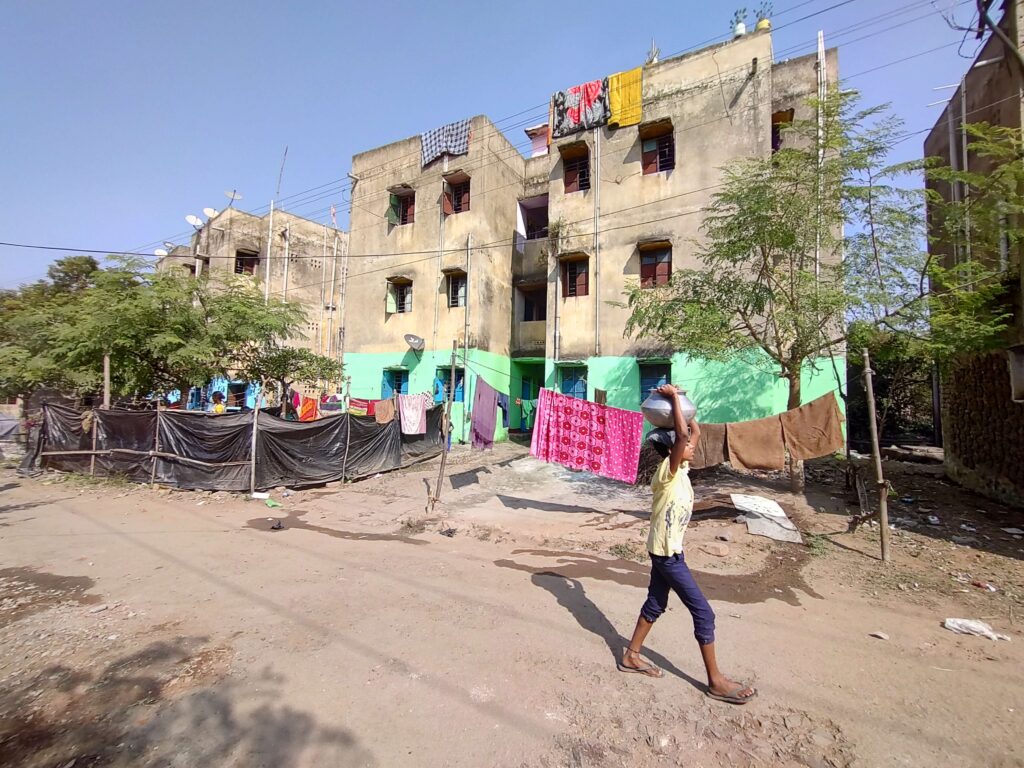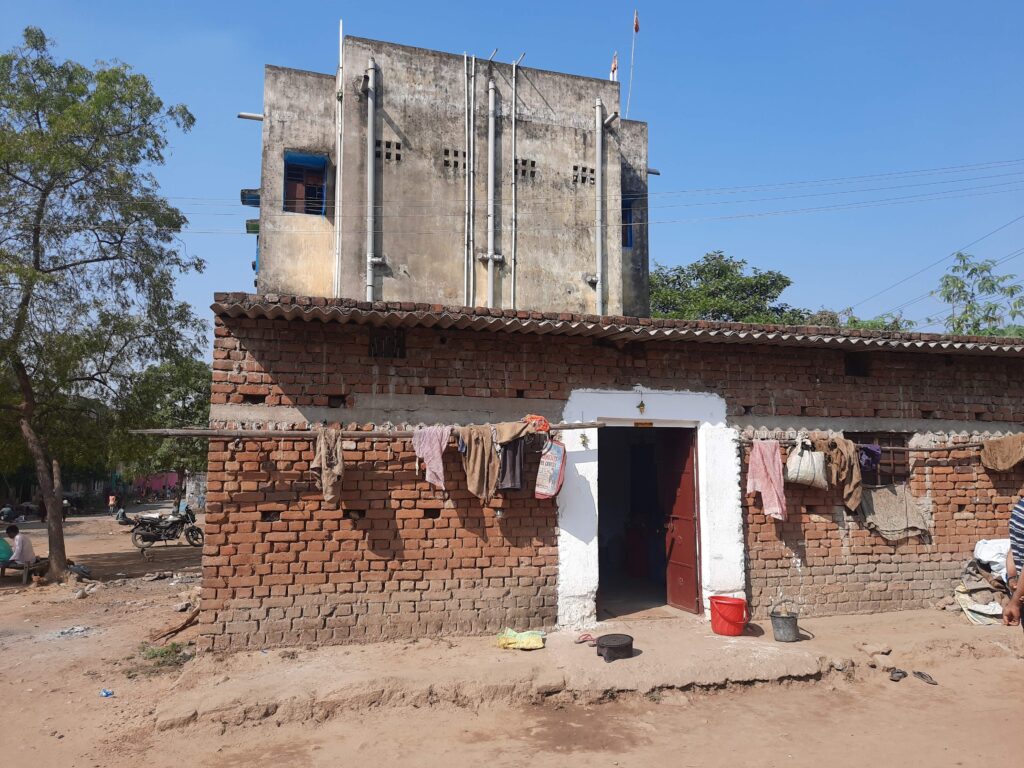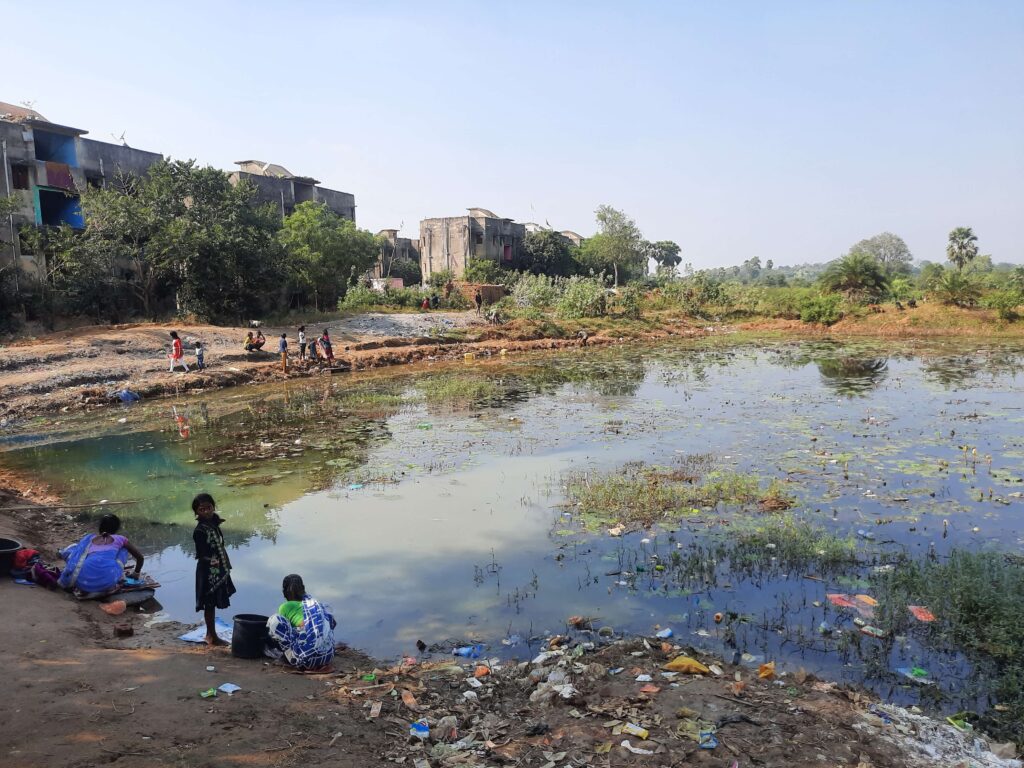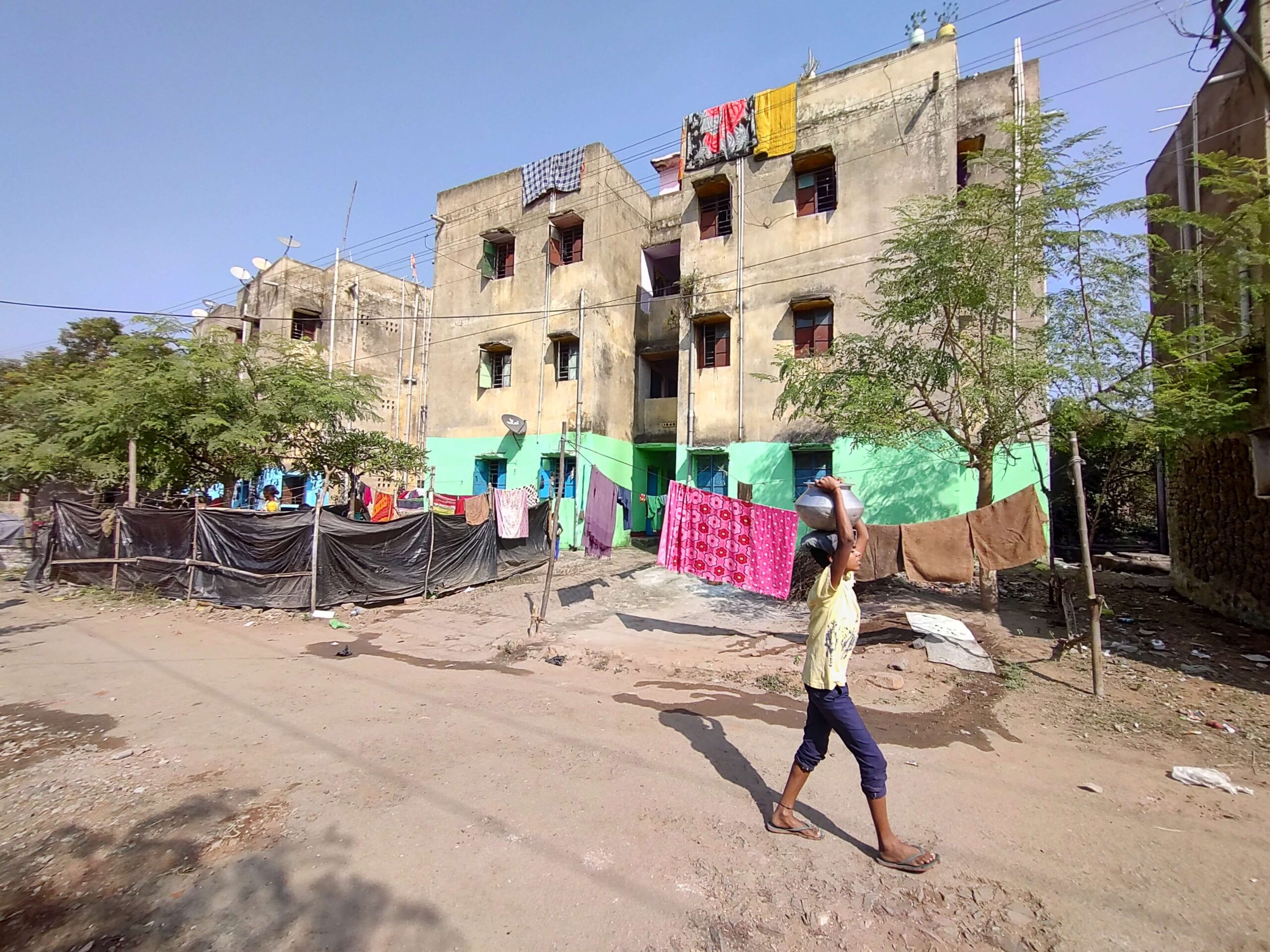This is the second part of a two-part story about the Jharia Coal Mines. Read part one here.
***
Babban is the current secretary of the Jharia Samiti — a collective of representatives from the villages in the Jharia Coal Mines region that came together to assess the living conditions, and health and environmental hazards affecting their people. The Samiti was properly constituted in the year 2003, facilitated by funding from the Ford Foundation, but it was already taking shape and functioning in smaller capacities way before 2003 – just without the name.
Many of the Samiti’s early efforts were scattered and need-based, focused on supporting those affected by fires and land cave-ins. There were about three people involved, the Samiti had limited geographical reach, and there was little in terms of an archive or tracking of demands or processes of mitigation and rehabilitation. According to Babban, initially, many mobilisations across settlements also came about via political parties and were not authentic to people’s lives and demands.
In a way, the funds from the Ford Foundation enabled the Jharia Samiti to gather popular support and start working in a systematic way, strengthening their vision and capacity to tackle multiple issues caused by living in the coal mine regions of Jharia. The Foundation has a history of funding various development projects in Asia. In Jharia, the Samiti (then a very very small group) received funds through Adarsh Seva Sansthan (ASS) in Jamshedpur. To start with, Jameel, then a community worker with ASS, was deputed by the foundation to work in Jharia. He eventually joined the Foundation and continues to work with the Samiti today.
Look, we were already working with people prior to 2002. There were fewer people but it was also a different time. Only the Bharat Coking Coal Limited (BCCL) was around. When the Ford Foundation began its work in 2003, more people joined in, and awareness spread that coal fires and landslides were major issues that needed to be addressed.
People started to work together. The number of people continued to grow. Then came the Jharia Rehabilitation and Development Authority (JRDA) in 2008 which began working on the issue of rehabilitation. After the Ford Foundation left in 2018, there was less money but no shortage of people. People come and go nowadays, but our efforts with both BCCL and JRDA continue.
— Babban, Secretary of the Samiti
Ford Foundation and the Samiti’s work included creating environmental guidelines with the local community and spreading awareness regarding schemes (Ladli Yojna, Bal Vikas Yojana), policies, and rights and advocacy activities to get access to services such as water, electricity, streetlights, and livelihood. As part of this, the Samiti mobilised groups from villages and trained them to survey, raise demands and carry out advocacy work.
When the Jharia Rehabilitation and Development Authority (JRDA) was established in 2008 as a statutory body to intervene in cases of mining-related incidents where residents needed to be moved to new housing, the Samiti widened its scope of work to focus on the prioritisation and tracking of families that were up for rehabilitation, one of the most urgent needs of the area.
In Jharia, one will find several families willing to move out of the Jharia Coal Field region out of sheer fear of death. However, the process of rehabilitation is slow, unpredictable, and unviable. Allotment of a new house can take months or might never happen at all. Many residents continue to live in temporary alternative conditions, waiting for a house to be allocated.
According to Jameel, now a local housing rights activist and field mobiliser with the Jharia Samiti, neither the BCCL nor the JRDA puts in any active effort to document, track and prioritise families for rehabilitation. So if a family loses a house and goes to live in an alternate place, there is no way the JRDA can trace or contact them. With no clear process in place, many families in need of a house are left out. There is no system in place for claiming any kind of compensation from BCCL or other mining companies for lost lives and property.
Jameel, Babban, Saleem, and others in the Samiti fill in this gap by submitting lists of vulnerable areas and beneficiaries to the JRDA on a regular basis. They also work with the BCCL, the implementation and monitoring agency responsible for what happens in the Coal Mines, to mitigate vulnerabilities from onsite disasters.

Today about 80,000 people are living in JRDA housing. But a question lingers — is rehabilitation a matter of desperation? How keen are people really to leave the coal fields and how ready are they to make a home in another place in the middle of a government housing project? In the absence of work, vicinity to the nearest town, and almost no infrastructure, how long can one expect the residents to live here in the name of safety?
The first set of houses were constructed in 2015 and in 2020 four new blocks were constructed — two houses on the ground floor and four on the rest of the floor. In some instances, smaller houses have come up in between these housing blocks. The housing units are located 6 km away from the coal mine and about 11 km from Dhanbad. People living here have no mobility options except for walking or having a private vehicle. Because of this work opportunities have taken a huge toll pushing some people below the poverty line and many to desperately look for a new skill or work to sustain.

The housing units are of poor construction quality and not satisfactory according to the residents. Cracks have started showing on the ceilings of not just the housing units from 2016 but also the units that were constructed and allocated in 2020. There is no maintenance or repair support by the JRDA for this. The water supply is scarce and the pipes connecting to the overhead tank have started to break resulting in expenditure on tankers by the residents of most blocks.
People here use a pond for washing, and in some cases for bathing and defecating purposes also as the availability of pipelines, drainage, and water supply are inconsistent amongst the blocks. There is no waste collection system and residents mostly dump their waste between blocks or resort to burning.

The story of Jharia is not new or novel in any way. Mining geographies all over the world are known to be complex regions of settlements. The health and safety of the people, or lack thereof, is often directly intertwined with their livelihood opportunities. The same mines where families and homes are broken apart are also the source of employment and sustenance. In Jharia too, residents do not want to entirely leave the coal mine area nor do they want to completely leave mining as that is their primary source of livelihood, however illegal or informal.
In 2018, the Ford Foundation withdrew from the area and the working capacity of the Samiti to support families in the region took a hit. Jameel says, “People would be coming from far away and we didn’t even have money for snacks. Earlier 10-15 people would turn up for meetings from each village but now barely three show up. Once the funding stopped there is no guarantee for anything and we have to do everything ourselves.”
After the very structure of their mobilisation disappeared, the remaining members of the Samiti pared down their focus to things of utmost priority — health, work and life itself. Some of their activities involve marking out vulnerable areas and maintaining a list of families living there, documenting causes of health issues, tracking familiars awaiting allocation and rehabilitation, and other support to people.
In December 2021, the Samiti compiled a list of people’s demands from the BCCL and the Jharia Coal Mines, and the JRDA for action.
Samiti’s demands from the Jharia Coal Mines and BCCL:
- Haphazard mining needs to stop as it creates unpredictable conditions. The BCCL should put a stop to further mining until a proper evaluation of the situation is done.
- Make a priority list of regions that are the most vulnerable, and allocate houses to families in these regions first.
- Immediately fill up the mined areas to prevent exposure to further vulnerabilities. Similarly, all the land parcels where mining happens in the future need to be filled up before starting to mine another land parcel.
- Arrive at a compensation amount for not only future damages but for damages and losses that have already taken place.
- Provide free regular health check-ups for residents and cover costs for any remedial actions required.
- Residents should get an explicit right to use coal as a resource for their livelihood.
- The Samiti should be involved in deliberations for housing allocations as they know the ground situation the best and have been tracking families for years.
Samiti’s demands from the JRDA:
- Construction of new housing units closer to the city with proper planning and layout.
- Make provisions for livelihood, health infrastructure, and transportation connectivity to strengthen the spatiality of the region. Set up transportation between JRDA housing and the coal fields on a frequent basis
- Undertake regular repair and maintenance of the overall site as well as the housing units. Ensure access to proper sanitation, water, drainage, and waste disposal, and cleaning up of the pond
There is no method to monitor any progress or action taken based on these demands. There is no documentation, and official plans remain outdated and unimplemented. The choice before people today is either to jeopardise their health or to shift to a place where there is no work. After over 100 years of mining in the region, the Jharia Coal Mines are in need of a comprehensive policy framework that doesn’t create such a trade-off situation between safety and livelihood for the people that call this place home.
This is the second part of a two-part story about the Jharia Coal Mines. Read part one here.



